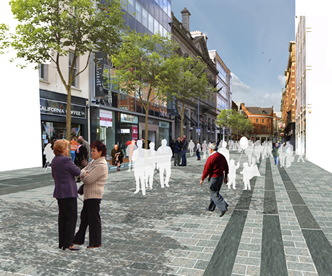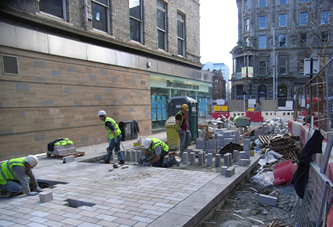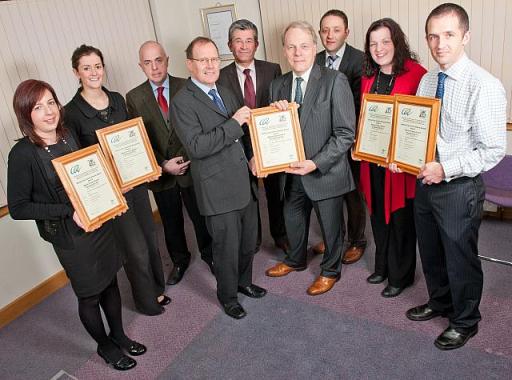Belfast City Centre Streets Ahead |

76.8% |
Interim Client & Outline Design Award
Client: Department
for Social Development Northern Ireland
Project team: EDAW
AECOM, Mouchel
Parkman, Turner
Townsend, Ostick
and Williams, People
Friendly Design and CBAT.
The Project
In 2005 the Department for Social Development in Northern Ireland appointed EDAW AECOM to lead an Integrated Design Team in the preparation of a masterplan for the regeneration of the public realm in the city centre of Belfast. The Integrated Design Team was initially appointed to coordinate three broad stages of work. These included:
- The formation of a vision and strategy for public space provision in the entire city centre area over the next 15 to 20 years
- The identification and design of the first phase of work to be implemented as exemplar projects between 2007 and 2009
- The production of Public Space Design Codes with the aim of giving integrity to implemented schemes in the future.
The CEEQUAL Interim Client & Outline Design Award for the Belfast Streets Ahead Project covers stages 1 and 2.

Artist's impression
The vision for the public realm within the city centre was to regenerate it for a range of user groups and activities, considering the safety, protection and enjoyment of the people within its centre. The project has aimed to create an environment where people feel safe from traffic, crime and anti-social behavior and to experience the city centre in comfort having options to sit, play, rest and walk at ease.
The public realm has incorporated:
- the replacement of all paving with natural stone
- recycling of existing natural stone where appropriate (principally kerbs)
- new lighting
- new street furniture
- new drainage
- new road signage
- incorporation of artwork
- new specimen tree planting.

The project has strived to achieve maximum opportunities for reduction of waste and sustainability of the project. For example:
- Reducing the energy requirements of the completed scheme by introducing efficient street lighting that can be monitored remotely and the facility to reduce use during off-peak periods through a SELC unit.
- Reducing future maintenance requirements and agreeing management and maintenance methodology.
- Materials selected for durability with high-quality materials with a long design life.
- Minimising off-site disposals to landfill.
- Increasing the recycling content.
Work on site started in 2007 and is due to be completed by October 2010.

